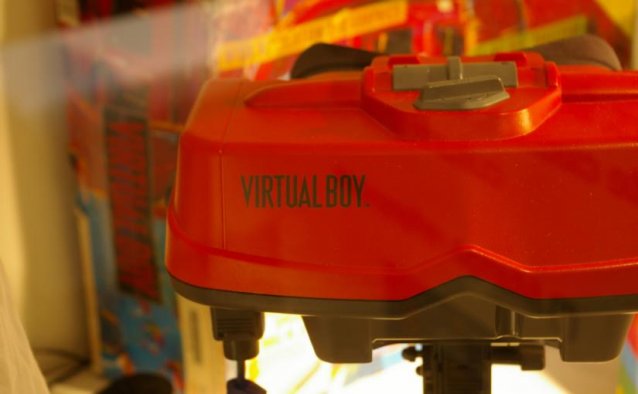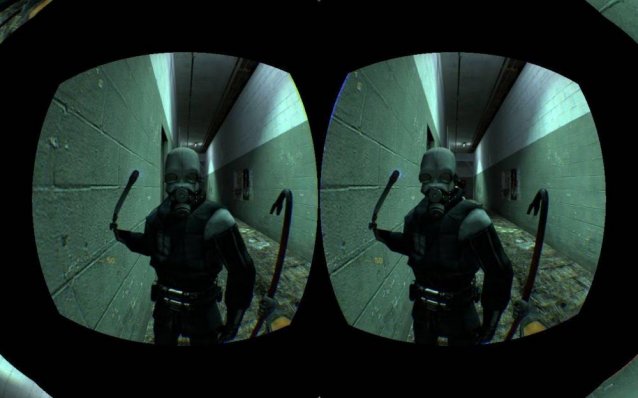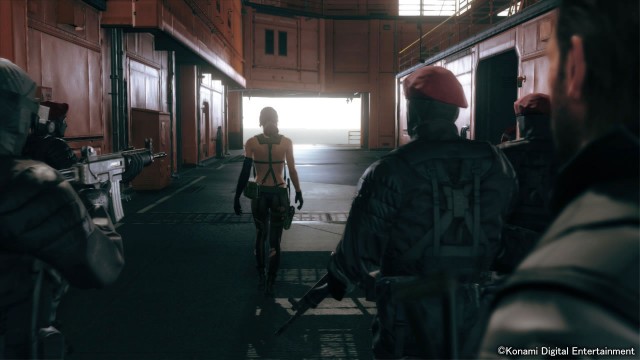


Yes, this is what you look like.
The future never quite works out as promised. Science fiction correctly predicted a few things like wearable, lightweight communicators and data pads with instant access to immeasurable libraries of information. Unfortunately, we still don’t have flying cars or jet packs. Well, guess what? Virtual Reality is happening!
That’s right. Suck that down, reality! We don’t need you — we’re making VIRTUAL reality. It’s like normal reality but NEW and you have to pay for it in installments!
Do we need virtual reality? Is it enjoyable or even practical?
If I had to make some wild speculations (and who doesn’t love those?), I would say it’s not. Happening, that is. Like Sonic the Hedgehog I think VR in its current form needs to move into the background until a brilliant designer or the technology can tackle these outmoded ideas.
If you want people to get on board for an idea, it has to have appeal. Outside of the Starship Enterprise’s Holodeck or the Matrix, Virtual Reality has never really seemed cool. It might have seemed cool in the way that wearing ill-fitting, color-clashing outfits are cool, but that’s mostly just the opinion of “ironic” hipsters. The common video games consumer doesn’t see the appeal of something so niche.
To understand why it seems so niche we need to unpack the concept for its history, signifiers, and practical application.
Bless Nintendo for doing everything they can to make video games in an era of “cinematic experiences for mature gamers.” They’re not without failure, of course, and their past ventures into augmented reality are a good entry point for dissecting this matter.

The Virtual Boy was a head-mounted display (HMD) that used a parallax effect to create “true 3D graphics” in glorious red monochrome. Even Nintendo saw the folly of HMD and gave players a stand so they did not have to wear it on their face. Despite being brave, the platform never really took off and remained a niche device that only shows up in gags, adamant games enthusiast’s collections, and the personal gallery of status-obsessed posers who want cred without knowing much of why they spent exorbitant amounts of money on something they don’t use.
The problem with the Virtual Boy is a problem all VR that use HMD run into: A disconnect from the rest of the world.
Sci-fi lied to us again with its foreboding messages of mankind eagerly forfeiting the real world for an empowering fantasy world of our own creation. That could never happen! People are too well trained to be consumers to produce things! Jokes aside, there is a severe disconnect with wearing an HMD and using a controller that we cannot see.
Between our tactile senses that remind us there’s a couple pounds of plastic strapped to our head, and this phantom sense of a controller we feel but can’t see, there’s a great cognitive dissonance that prevents it from being a seamless experience. This doesn’t even take into account that there will be sounds outside of the HMD we can’t fully detect and necessary biological functions will require us to unplug to perform them.
Supporters of VR will tell you that it doesn’t matter as long as the user really experiences “presence.” Presence is essentially the VR buzzword analogous to “immersion” or “visceral” the mainstream games media likes to throw around now.
What “presence” means for VR is creating a satisfying, well-designed piece of software that encourages a great experience for the audience so much that they feel sucked into it. That’s no small task and it’s asking for trouble trying to dress up that concept with a single word.
The practicality of this kind of set-up is by far the biggest hurdle for any real developments of VR and I would be surprised if people widely adopted it.
Exposure to VR causes derealization and depersonalization – or, in other words, VR users can experience the feeling that the real world is not real or that their feelings and sense of self seem unreal. If you need more than the linked study a trip to the Oculus Rift forum shows that it’s not just French Canadians but everyone experiences some altered sense of perception, which can be greater or worse depending on pre-existing factors such as anxiety or dissociative disorders.
Immersive VR needs perceived depth and 3D in games is usually gimmicky. Games are not typically designed around the user’s ability to grasp depth of field as an important part of the gameplay.
The only time that 3D seems to have been well-implemented was with the 3DS, and I don’t mean that it included a slider to turn it off. All the visuals on the top screen would display sort of like a diorama and the player could see the bottom screen and the rest of the world without stumbling over virtual disassociation. This effect worked perfectly for a game like Super Mario 3D Land, allowing the player to accurately sense the distance needed to jump. Unfortunately, this expert implementation of 3D is the minority.
People aren’t going to want what you’re selling unless you have games or “killer apps” on it. Whether it be Virtual Reality, a game console, or even the new hot consumer electronic by the foreboding tech giant that wants to revolutionize how you interact with the world.
I’m talking about Google Glass. It failed.
The Nintendo 3DS has no shortage of good games but the 3D was an afterthought in most games design. VR takes effort to develop for and while the media loves to write about how Virtual Reality is the future of games can you, the reader, name five or more games for the Oculus Rift that you’re excited to get? How about ones that were actually made for it and not a port of an existing game like Half-Life 2 or Team Fortress 2? How about five games for Valve’s VR headset or Sony’s PlayStation VR?

Google Glass exploded in popularity with that video of the hipster playing the ukulele on the rooftop and even more when celebrities and upper-crusty Silicon Valley types were seen wearing them.
It failed to take off not only because Google was slow to start selling the actual product but because it has no utility beyond being a Google App manager.
Remember how the media gushed endlessly about Google Glass?
The lesson to be learned is that you have to be wary of taking the media at face value. Except for me and this article of course; because if you don't trust me (at least for now), we get into some weird Socrates Plato Liar Paradox. Take things with a grain of salt, in any case.
So what’s the solution? Burn it all down and salt the earth? Do what I suggested at the start of this article and wait for someone who can think outside the box to get it right?
That might not be necessary. The solution may just be Augmented Reality. Google Glass was going in the right direction with lightweight headgear that is less obtrusive than standard VR HMD but Google was too busy forcing Google+ on everyone to make it worthwhile.
You of course won’t hear much about AR devices because that’s not the sizzling hot technology that has had big money thrown into it, but it pops up here and there with various devices and at trade shows. Even the Nintendo 3DS had an AR functionality with the handheld’s cameras and unique cards.
castAR may be the bridge between the VR and the real world that bides time until technology has sufficiently advanced to give us fuller VR simulation. castAR was invented by Jeri Ellsworth during her time at Valve but was able to break out into the future on her own after some tense experiences that deserve their own time.
It’s hard to say if the castAR and similar Augmented Reality technology has what it takes to get a foothold against an adverse media, but if it wants to stand a chance it has to have games or something that will drive consumers to use it.
This is likely what Mark Zuckerberg was hoping for when he bought Oculus Rift after hapless Kickstarter backers had retroactively paid the billionaire’s R&D bill. Training the consumer base to regularly use a VR peripheral is a good way to overcome preconceived notions, but let’s be honest: Facebook isn’t as popular as it used to be. At the very least it’s “less cool” now and wearing a big dorky VR HMD when you want to see how great your ex’s life supposedly is isn’t going to combat the site’s declining status.
I’ll stick to regular video game simulation for now. I don’t have the money to drop on speculative technology or know anyone status obsessed and ironically uncool that can get me some on the sly. Besides what good is a computer or console without worthwhile software?
---
Mark Ceb is sleepy looking guy who loves video games and is endlessly curious about the internet. He is on a quest to show the world that neither of those things are scary or will destroy society. See everything he makes at markceb.com
Header photo credit: Lockheed Martin




 Evil's Soft First Touches - The Witcher 3 DLC Hearts of Stone Guide
Evil's Soft First Touches - The Witcher 3 DLC Hearts of Stone Guide Majoras Mask 3D Empty Bottle Locations
Majoras Mask 3D Empty Bottle Locations Fallout 4: How To Get Infinite/Unlimited Adhesive For Crafting
Fallout 4: How To Get Infinite/Unlimited Adhesive For Crafting Call of Duty: Modern Warfare 2 Guide
Call of Duty: Modern Warfare 2 Guide The Talos Principle Walkthrough
The Talos Principle Walkthrough